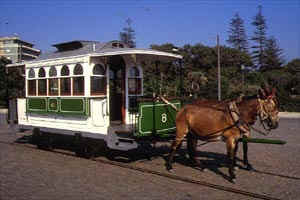 |
| Tram cars were popular as city transit in thosedays.oldkolkata.blogspot.in |
 |
| Calcutta www.cesc.co.in |
 |
| Calcutta.www.cesc.co.in |
Thomas Edison, (February, 1847 – October, 1931) , prolific American inventor, developed many devices that had wider application in all phases of life around the world, including the phonograph, the motion picture camera, and the long-lasting, practical electric light bulb.
Since Alessandro Volta's demonstration of a glowing wire in 1800 many worker such as Henry Woodward, Mathew Evans, Humphry Davy, William E. Sawyer, Joseph Swan, et al had developed incandescent bulb that had short life. Edison's sustained works on filament, an essential part of a bulb, despite failures bore him fruits. Edison came up with a practical bulb in January, 1880 by using "a carbon filament or strip coiled and connected to platinum contact wires". This was the first commercially practical incandescent light.
In the 1890s and early 1900s, better and safe application of AC currents, long distance transmission, step down transformers, etc resulted in commercial exploitation of electric power.
The electrification of Calcutta took place 17 years after New York, the first city to have electricity in 1882 and eleven years after London, which was electrified in 1888. P W Fleury & Co was the first one in India that conducted first demonstration of electric light in Calcutta on 24 July, 1879. Yet another demo was done by Dey Sil & Co on 30 June, 1881 and it lit up 36 electric lights in the Garden Reach Cotton Mills owned by Mackinnon & Mackenzie. In 1899 the first thermal power plant of Calcutta Electric Supply Corporation Limited was commissioned during Lord Curzon's period. Calcutta, then the Capital of the British Empire, was considered the second largest city next to London. After the arrival of electric power in Calcutta the Government of Bengal passed the Calcutta Electric Lighting Act in 1895. The first license was issued for a period of 21 years, initially covering an area of 5.64 square miles, which has now grown to 567 sq kms.
 |
| Horse-drawn tram.www.irfca.org/ |
With a capital of 1000 pounds on 7 January, 1897 Kilburn & Co, registered in London, secured the Calcutta electric lighting license as agents of The Indian Electric Co Ltd. Subsequently it changed its name to The Calcutta Electric Supply Corporation Limited with additional capital of 1,00,000 pounds. In December, 1898 its clients were bank of Bengal (now the State Bank of India), The Bengal Club on Chowringhee and several private residences. The power was supplied on trial basis.
 |
| horse driven tram in Calcutta in+1873.oldkolkata.blogspot.com |
The utility company initially installed 'Mains' for the supply of 60,000 lamps and later 200,000 lamps on a 24 hour basis. The source of supply was from the 800 HP power generating plant with eight dynamos and a storage battery at Emambaugh Lane commissioned on 17, April, 1899. Later power connection was given to the Government House, whre Lord Curzon was working. Electricity came
to Bombay in November, 1900 Killick Nixon and Company , as agents of Messrs. Kilburn and Company of Calcutta was the utility company.
Soon electric power ruled the roost and the era of hand-
 |
| Busy Calcutta street scene, 1945..www.funonthenet.in |
fan and Punkah - country fan hanging from the ceiling
was over, replaced by electric fansthat gave relief to people who were
sweating it out under the tropical hot sun. The Calcutta High Court,
the Government owned Army Clothing Factory at Alipore, Fort William and
other places switched over to electricity and also electric fan between 1899 and 1902. As part of improving public transport system to move people to different locations within the city, in 1902 electric tramway was introduced replacing horse drawn carriages, which were popular then. In 1912, 6,000 consumers used 12 million units of power. In the later period 25 watts bulb was widely used.
Ref:
|









